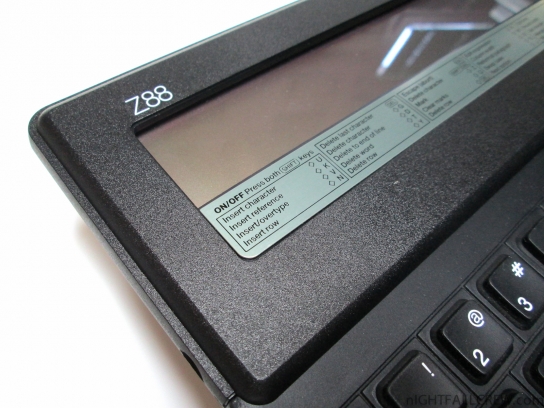Z88 Cambridge Computer

I thank my dear friend that gave me the Z88 Cambridge Computer.
Autopsy:
The Cambridge Computer Z88 is an A4-size, lightweight, portable Z80-based computer with a built-in combined word processing/spreadsheet/database application called PipeDream, along with several other applications and utilities, such as a Z80-version of the BBC BASIC programming language.
The Z88 evolved from Sir Clive Sinclair’s Pandora portable computer project which had been under development at Sinclair Research during the mid-1980s. The machine was launched at the Which Computer? Show on 17 February 1987.
The Z88 is a portable computer weighing 0.9 kg, based on a low-power CMOS version of the popular Zilog Z80 microprocessor. It comes with 32 KiB of internal pseudo-static RAM and 128 KiB of ROM containing the operating system (called OZ). The memory can be expanded up to 3.5 MiB of RAM, the contents of which are preserved across sessions. An integrated capacitor prevents the Z88 from losing its data for the limited amount of time it takes to change the batteries.
The machine uses a membrane keyboard, which is almost silent in use; an optional electronic “click” can be turned on to indicate keystrokes. The Z88 is powered by four AA batteries, giving up to 20 hours of use. It has three memory card slots, which accommodate proprietary RAM, ROM or EPROM cards, the third slot being equipped with a built-in EPROM programmer. Card capacities range from 32 KiB to 1 MiB.
The Z88 has a built-in eight-line, “super-twisted” LCD display, which has greater contrast than conventional twisted nematic LCDs.
source: wikipedia














Recent Comments